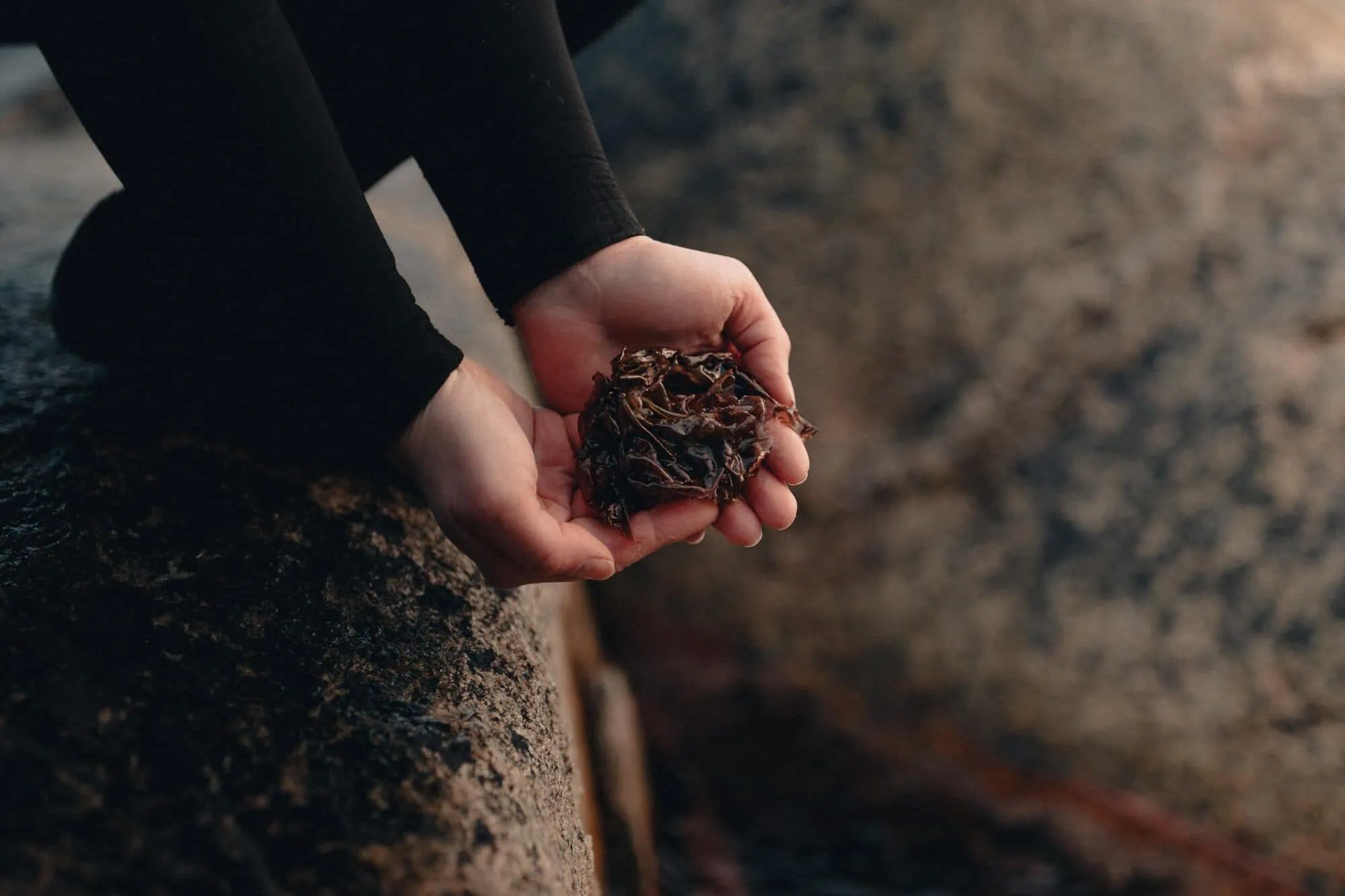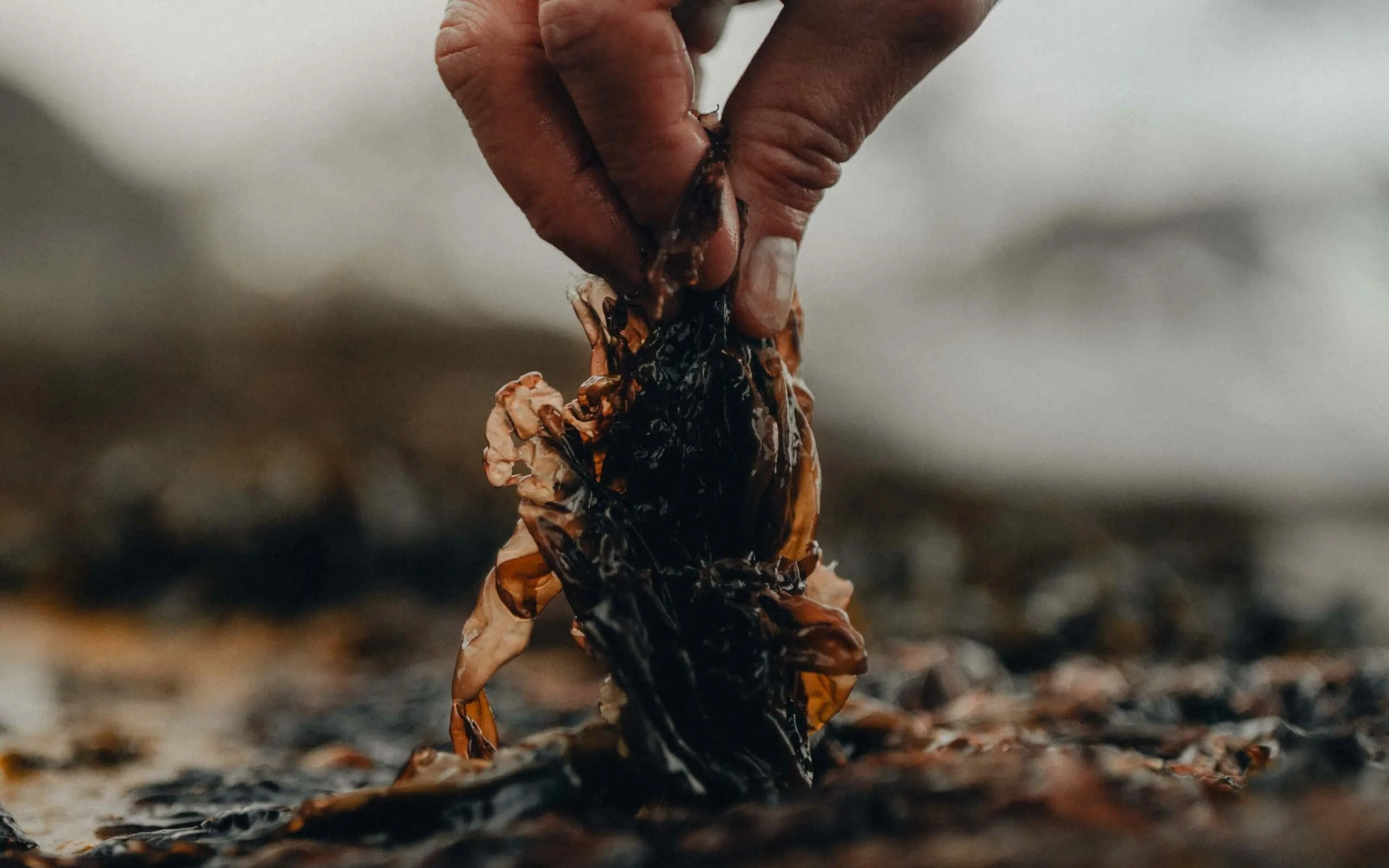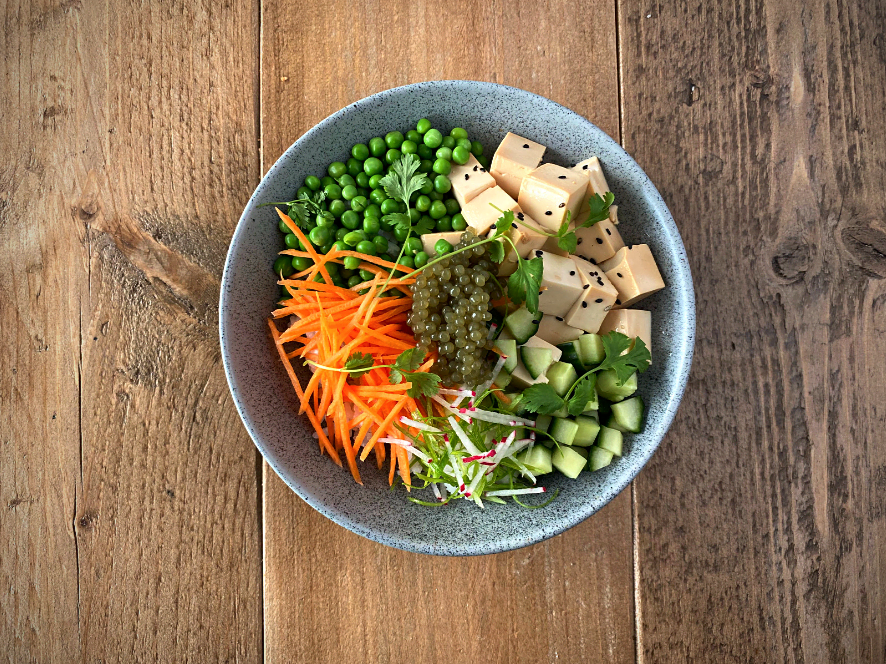
Nori
Porphyra umbilicalis
Other names: Laver, Gim
N.B. There are thought to be around 70 species of Porphyra worldwide, of which umbilicalis is just one. Due to the many similarities in appearance, flavour, texture and common use, the names ‘Nori’, ‘Laver’ and ‘Gim’ tend to be used interchangeably, although they are technically slightly different. Nori – the Japanese term, has become the most well-known name, probably due to the global popularity of Japanese sushi. Laver has its roots in the British and Irish coastal communities, and gim is the Korean term for this type of edible seaweed. For the sake of simplicity, we refer to porphyra umbilicalis as nori.
Nori is a red algae that grows in the intertidal zone, attaching itself via a minute root system (holdfast) to rocks that are submerged during high tide, and exposed during low tide. It has very delicate, almost transparent fronds that range in colour from yellow-green to purple-red, depending on the age of the plant. Despite being just one cell thick, the fronds are flat and broad, even disc-shaped, growing up to 20cm. It can be harvested wild during autumn, winter and spring. It has also been successfully cultivated, with over 600 square kilometres of Japanese coastal waters given over to nori production, an industry worth over a billion dollars each year.
It’s not just Japan that has a long-standing love for nori. In Wales, where it’s known as Laver, this seaweed has been used as a vital food product since the 17th century:
Laverbread is a traditional Welsh delicacy made from laver seaweed. To make laverbread, the seaweed is boiled for several hours, then minced or pureed. The gelatinous paste that results can then be sold as it is, or rolled in oatmeal; it is sometimes coated with oatmeal prior to frying. Laverbread is traditionally eaten fried with bacon and cockles as part of a Welsh breakfast. It can also be used to make a sauce to accompany lamb, crab, monkfish, etc., and to make laver soup (cawl lafwr). Laverbread [has been described] as “Welshman’s caviar”.
https://en.wikipedia.org/wiki/Laverbread
The high nutritional content of the seaweed made it an excellent diet staple for the hard-working Welsh pit-men. Today, it is often cited as a great natural source of nutrients for people on a plant-based diet, who may otherwise miss out on certain minerals found in meat and dairy products.



Nori has a mild but pleasant taste reminiscent of clams, oysters and olives. It pairs very well with ingredients like soy sauce, sesame oil, ginger and mirin. When fried or roasted in the oven, it takes on a salty, nutty taste, as well as turning a deep shade of green. Its crispy texture makes it a fantastic garnish, but you can also let it rehydrate in dressings and marinades for a softer texture, more suitable for salads, soups and sandwiches. Like all seaweed, nori is full of naturally occurring monosodium glutamates, which trigger the umami flavour, and enhance the other ingredients on the plate. In its sheet form, nori is a key element in many sushi dishes, as well as a snack on its own.
Nutritional profile:
- Vitamin A (important for vision and growth)
- Vitamin B6 (important for healthy brain activity and nervous system function)
- Vitamin B12 (necessary for blood cell and DNA formation)
- Vitamin C (aids healthy blood cells and bone development)
- Vitamin K (helps with blood clotting and the building of healthy bone tissue)
- Magnesium (supports muscle and nerve function and energy production)
- Potassium (necessary for proper cell hydration)
- Calcium (for healthy bones and teeth)
- Protein (for cell repair and regeneration)
- Phosphorous (for growth, maintenance and repair of cell tissue)
- DHA fatty acids (essential for healthy brain function)

The exact nutritional content of seaweed depends on the season in which it was harvested, as well as its location. Seaweed is highly effective at absorbing trace minerals from its surroundings, which is why it’s important to source your edible seaweed from places where you know the water quality to be high. You can read more about where we harvest our seaweed here.
Recipes featuring nori:
Although nori is most famous in its sheet form, we prefer to use it raw and unrefined, allowing its natural flavour to shine through. Here we’ve teamed crispy nori with pan-fried gnocchi, marinated nori in a healthy poke bowl, and crispy nori with salmon nigiri for a deconstructed sushi-style treat.


